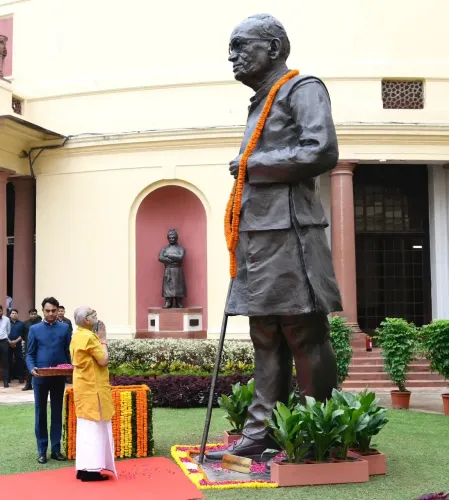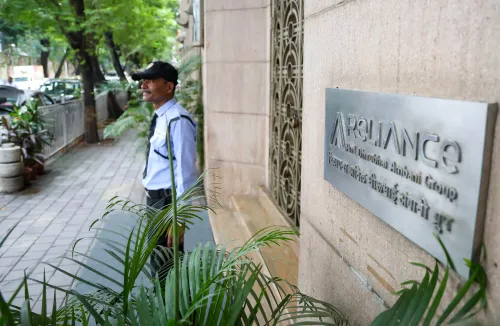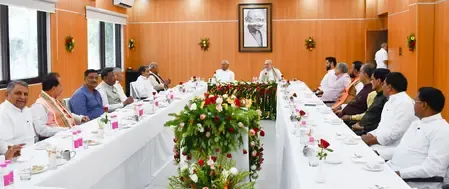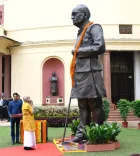Sambhal DM Declares ASI Team Unnecessary for Stepwell Excavation

New Delhi, Dec 22 (NationPress) After the excavation in the Laxman Ganj area of Chandausi unearthed a stepwell, Sambhal District Magistrate Rajendra Pensia stated that there is no immediate necessity for an Archaeological Survey of India (ASI) team at the location.
Pensia shed light on the region's historical importance, noting that the stepwell was constructed during the reign of the maternal grandfather of the king of Bilari. He indicated that this structure is officially recognized as a ‘baoli’ pond (stepwell), while addressing reporters.
Pensia elaborated that the second and third levels of the stepwell are made from marble, with the topmost visible floor crafted from bricks. He noted, “There are four chambers within this structure, which is currently buried under soil,” he disclosed.
During Saturday’s hearing, the Municipal Corporation was instructed to clear the mud to prevent damage to the structure.
While not confirming, Pensia approximates that the structure is around 150 years old.
Currently, no ASI team is present at the site, “but should the need arise in the future, the state Archaeological Survey team will be contacted,” he informed the media.
This significant historical discovery follows the reopening of the Kartikeya Mahadev Temple in Sambhal district, Uttar Pradesh, after a period of 46 years.
The find also coincides with the recent discovery of the ruins of an ancient Banke Bihari temple in the same vicinity earlier this month.
At the request of Sanatan Sevak Sangh officials, Sambhal District Magistrate Rajendra Pensia authorized the excavation at the Laxman Ganj site, believed to have contained a stepwell.
After about 45 hours of excavation, the walls of the stepwell began to be revealed, along with four rooms situated next to it. However, excavation was halted at night due to poor visibility.
According to local residents and historical accounts, the stepwell and its adjacent structures date back to the time of the Revolt of 1857. The site is thought to have served as a covert camping area for the royal family of Sahaspur.









